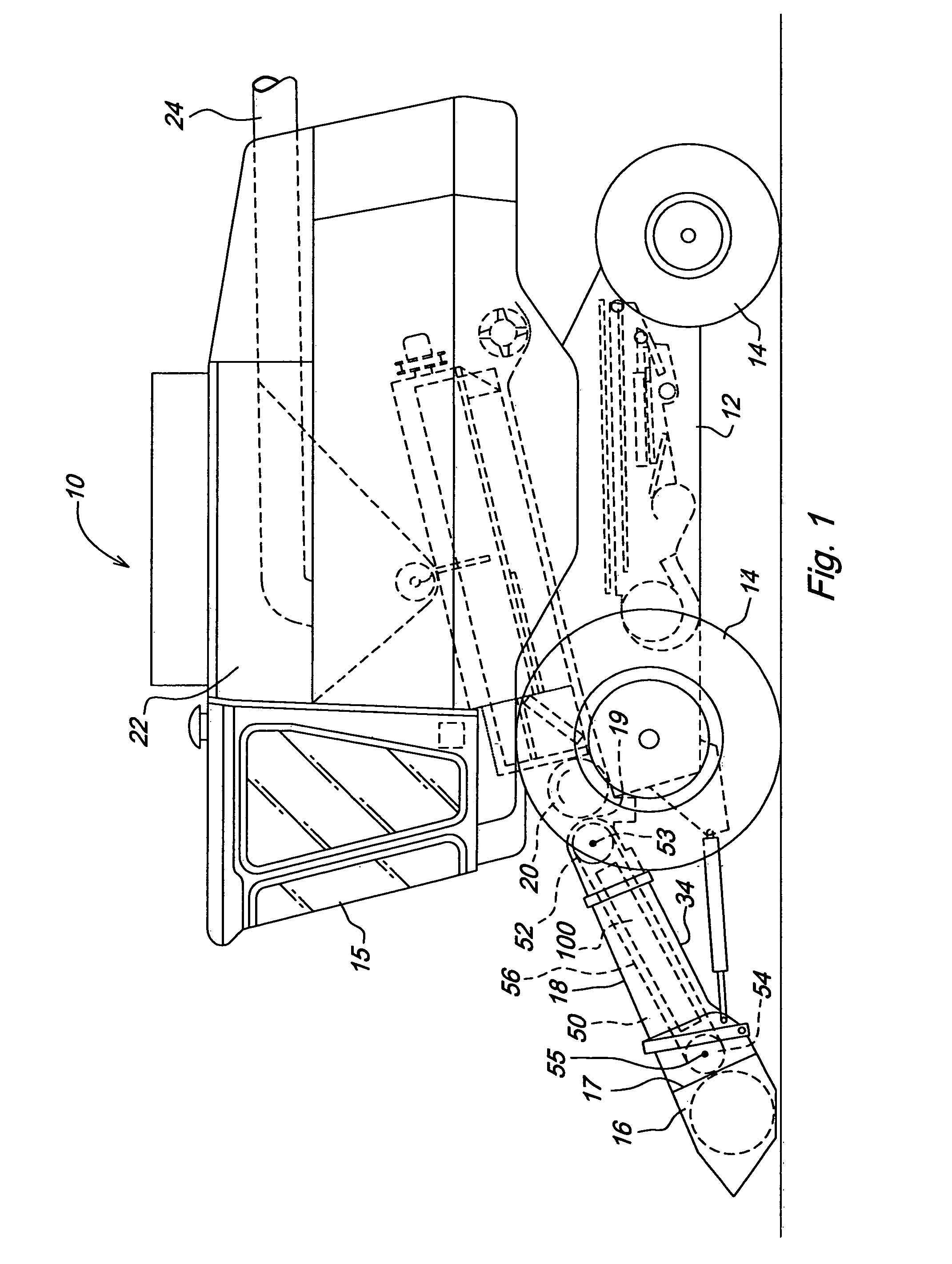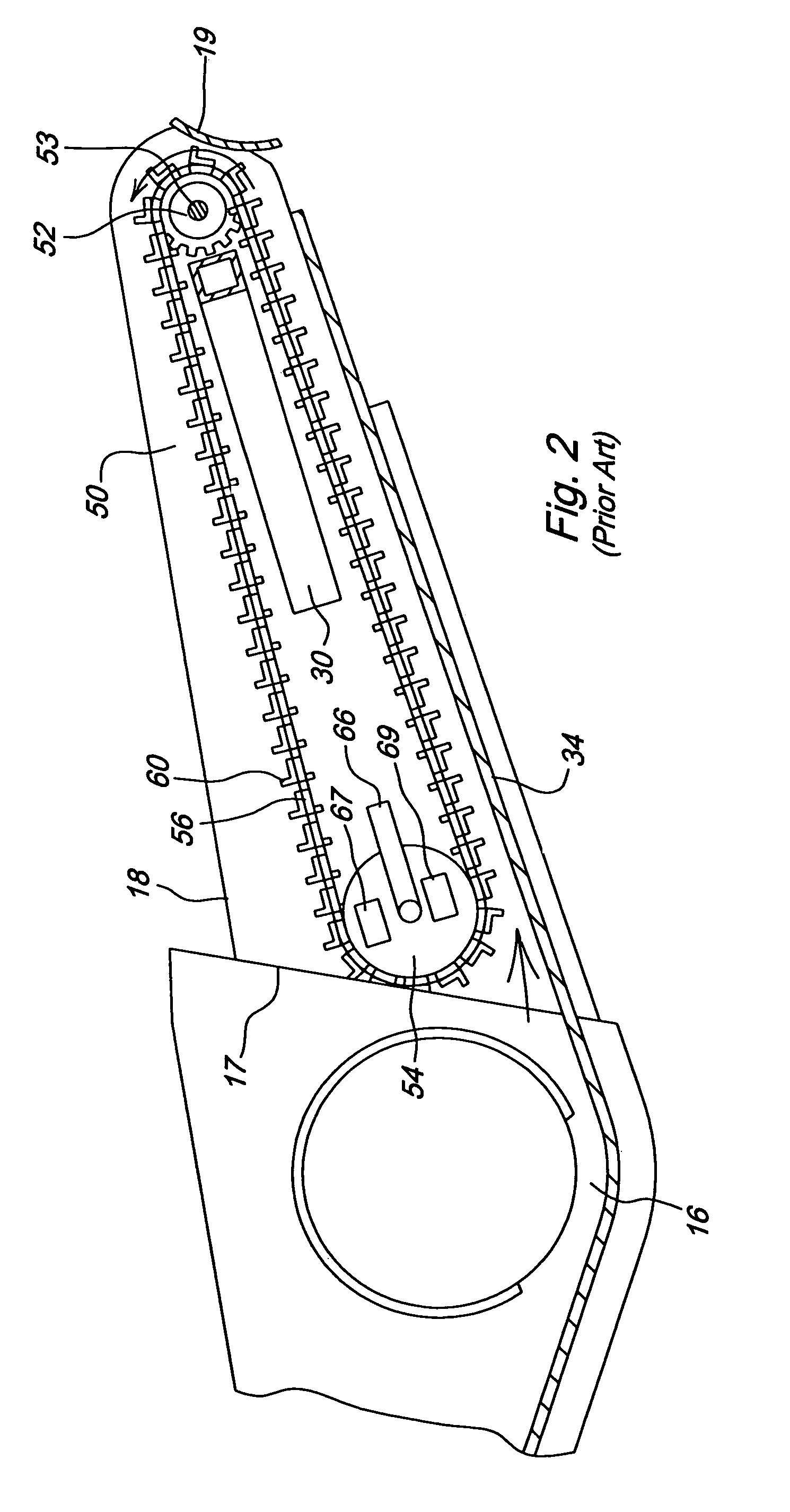Conveyor chain support for feeder house
a feeder house and chain support technology, applied in the field of conveyors, can solve the problems of increased drive torque, increased chain wear and loss of lubrication through heating and evacuation, and increased chain wear and loss of lubrication, so as to reduce the harvesting operation speed, reduce the wear on the feeder house components, and reduce the effect of throughput control simple and effectiv
- Summary
- Abstract
- Description
- Claims
- Application Information
AI Technical Summary
Benefits of technology
Problems solved by technology
Method used
Image
Examples
Embodiment Construction
[0017]In the discussion of the FIGURES the same reference numerals will be used throughout to refer to the same or similar components. In the interest of conciseness, various other components known to the art, such as crops, storage mechanisms and the like necessary for the operation of the invention, have not been shown or discussed, or are shown in block form.
[0018]In the following, numerous specific details are set forth to provide a thorough understanding of the present invention. However, it will be obvious to those skilled in the art that the present invention may be practiced without such specific details. Additionally, for the most part, details concerning harvester combine operation and the like have been omitted inasmuch as such details are not considered necessary to obtain a complete understanding of the present invention, and are considered to be within the knowledge of persons of ordinary skill in the relevant art.
[0019]FIG. 1 shows a combine 10 used for harvesting agr...
PUM
 Login to View More
Login to View More Abstract
Description
Claims
Application Information
 Login to View More
Login to View More - R&D
- Intellectual Property
- Life Sciences
- Materials
- Tech Scout
- Unparalleled Data Quality
- Higher Quality Content
- 60% Fewer Hallucinations
Browse by: Latest US Patents, China's latest patents, Technical Efficacy Thesaurus, Application Domain, Technology Topic, Popular Technical Reports.
© 2025 PatSnap. All rights reserved.Legal|Privacy policy|Modern Slavery Act Transparency Statement|Sitemap|About US| Contact US: help@patsnap.com



